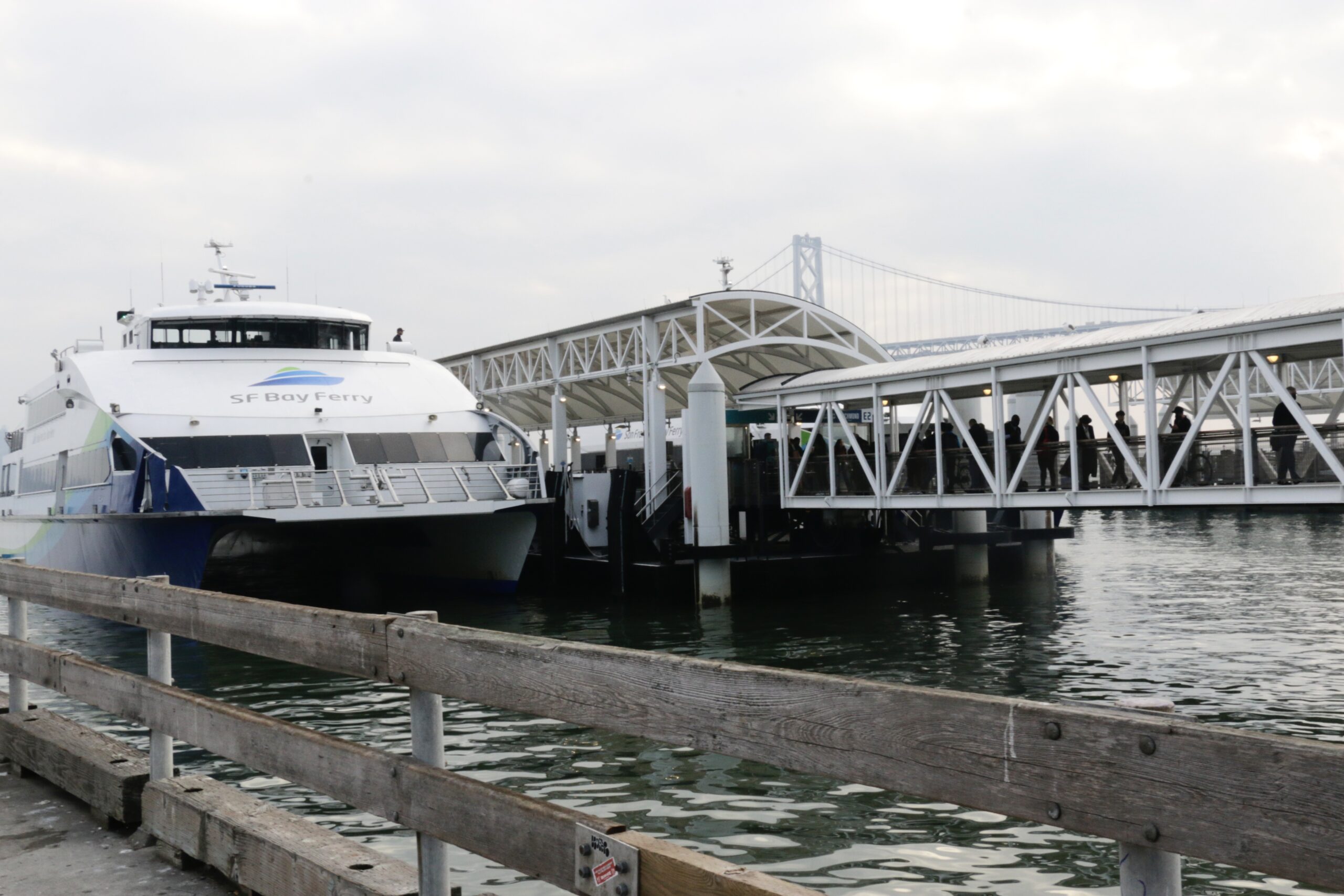A $5.5 million effort to cut air pollution from the Bay Area’s ferry system appears to be paying off.
The San Francisco Bay Area Water Emergency Transporation Authority, a regional transit agency operating the bay’s ferry service, says emissions from four newly converted San Francisco Bay Ferry vessels are down substantially.
Nitrogen oxide and hydrocarbon emissions are 73% lower, and particulate matter emissions are down by even more on the four vessels, said Thomas Hall, SF Bay Ferry spokesperson.
These vessels are now running cleaner, thanks to the Gemini Class Clean Air Conversion Project, which replaced older engines, beginning in 2022.
“I wish this had happened 10 or 15 years ago,” said Lauren Wetson, executive director of Acterra, a nonprofit environmental action group. “I’m happy it’s happening now. The ferry needed to do this now, and we have no time to waste or wait.”
Suzanne Paulson, a UCLA professor whose research focuses on chemical and physical aspects of pressing atmospheric environmental problems, said the engines will help.
“The lower emission engines would reduce the release of black carbon, and this is going to help tackle the climate change crisis,” said Paulson. “However, I believe that the success of this project depends on what fraction of the total pollution the Ferry is emitting and how much they are reducing it by.”
Funding for the project did not come by raising fares, Hall noted, but through a Bay Area Air Quality Management District grant and proceeds from the Alameda County Transportation Commission’s Measure BB sales tax.

